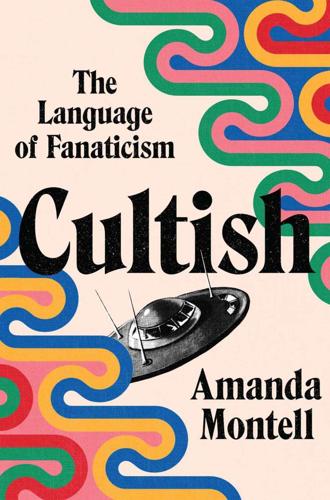
Cultish: The Language of Fanaticism
by
Amanda Montell
Published 14 Jun 2021
“sexual appeal”: Melissa Dittmann, “Lessons from Jonestown,” Monitor on Psychology 34, no. 10 (November 2003): 36, https://www.apa.org/monitor/nov03/jonestown. “He appealed to anyone”: David M. Matthews, “Jim Jones’ Followers Enthralled by His Skills as a Speaker,” CNN, http://edition.cnn.com/2008/US/11/13/jonestown.jim.jones/. his “little Angela Davis”: Sikivu Hutchinson, “No More White Saviors: Jonestown and Peoples Temple in the Black Feminist Imagination,” The Jonestown Institute, San Diego State University Department of Religious Studies, October 5, 2014 (updated May 30, 2020), https://jonestown.sdsu.edu/?
…
Christine Miller: Michael Bellefountaine, “Christine Miller: A Voice of Independence,” The Jonestown Institute, San Diego State University Department of Religious Studies, July 25, 2013, https://jonestown.sdsu.edu/?page_id=32381. the Death Tape: Alternative Considerations of Jonestown & Peoples Temple authors, “The Death Tape”, The Jonestown Institute, San Diego State University Department of Religious Studies, July 25, 2013, https://jonestown.sdsu.edu/?page_id=29084. ii. Jonestown mass death: Lauren Effron and Monica Delarosa, “40 Years After Jonestown Massacre, Ex-Members Describe Jim Jones as a ‘Real Monster,’” ABC News, September 26, 2018, https://abc news.go.com/US/40-years-jonestown-massacre-members-describe-jim-jones/story?id=57933856. ended in the suffix –ody: u/Apatamoose, “Is there a list anywhere tying the-ody names of the Heaven’s Gate members with their legal names?
…
Lifton, Thought Reform and the Psychology of Totalism: A Study of “Brainwashing” in China (New York: W. W. Norton & Company, 1961). calling someone “brainwashed”: Alla V. Tovares, “Reframing the Frame: Peoples Temple and the Power of Words,” The Jonestown Institute, San Diego State University Department of Religious Studies, July 25, 2013, https://jonestown.sdsu.edu/?page_id=31454. Jones enforced a “quiet rule”: Lesley Kennedy, “Inside Jonestown: How Jim Jones Trapped Followers and Forced ‘Suicides,’” History.com, February 20, 2020, https://www.history.com/news/jonestown-jim-jones-mass-murder-suicide. iv. known style of delivery labeled “the voice of God”: Jessica Bennett, “What Do We Hear When Women Speak?

Dangerous Personalities: An FBI Profiler Shows You How to Identify and Protect Yourself From Harmful People
by
Joe Navarro
and
Toni Sciarra Poynter
Published 6 Oct 2014
In November 1998, 1 year after the Heaven’s Gate mass suicide in California and on the 20th anniversary of the Jonestown massacre in Guyana, a small group of FBI profilers gathered at the FBI Academy in Quantico, Virginia, to look at the events surrounding Jim Jones and his cult, the Peoples Temple. It was a sobering day for me because even though I had read about the event over the years, seeing the actual crime scene photographs of the bloated bodies of children and babies gave me a new perspective on the massacre, the Reverend Jim Jones, and his narcissistic personality. For those who are interested, you can go online to the FBI’s virtual vault and retrieve the actual investigation of the massacre, which is code-named RYMUR (Murder of Congressman Leo Ryan) FBIHQ file number 89-4286, and examine some of the same documents that I viewed (http://vault.fbi.gov/jonestown/jonestown/).
…
For those who are interested, you can go online to the FBI’s virtual vault and retrieve the actual investigation of the massacre, which is code-named RYMUR (Murder of Congressman Leo Ryan) FBIHQ file number 89-4286, and examine some of the same documents that I viewed (http://vault.fbi.gov/jonestown/jonestown/). If you read the thousands of pages from this online FBI report or from one of the many books written about Jim Jones and the Peoples Temple, some lessons prominently stand out: A striking number of people can be made to unconditionally put their lives in the hands of one individual. Under the cloak of religion, a dangerous personality can get away with a great deal for a long time with no outside scrutiny. Sect leaders can exert total control over the lives of their followers, ruling as if in a totalitarian regime.
…
To me, the saddest situations occur when the paranoid personalities decide to isolate themselves with their children within the confines of a cult, as we saw with those who followed Jim Jones to his compound in Guyana. Exposing their children to the squalor of a dengue-infested jungle and the paranoid rantings of a narcissistic megalomaniac wasn’t enough. The final act was to kill their own children and themselves with cyanide-laced Kool-Aid (November 18, 1978). Nine hundred eighteen died that day because they—or, in the case of innocent children, their parents—believed. Like Jim Jones’s followers in Guyana, everyone who associated with David Koresh, head of the Branch Davidian sect in Waco, Texas, in the 1980s and early 1990s was in danger also, as he truly believed he was divine, that only he had all the answers, and that an apocalyptic end was coming.
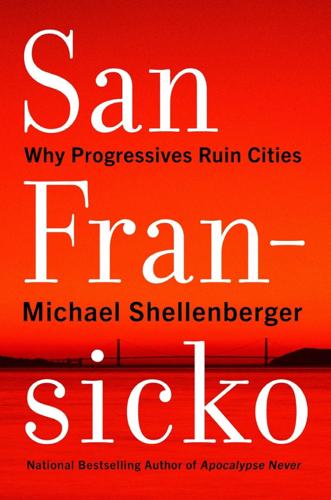
San Fransicko: Why Progressives Ruin Cities
by
Michael Shellenberger
Published 11 Oct 2021
David Talbot, Season of the Witch: Enchantment, Terror, and Deliverance in the City of Love (New York: Free Press, 2012), 278. 4. David Chidester, Salvation and Suicide: An Interpretation of Jim Jones, the People’s Temple, and Jonestown (Bloomington: Indiana University Press, 2003), 71; E. Black, “The Reincarnations of God: George Baker Jr. and Jim Jones as Fathers Divine,” Alternative Considerations of Jonestown and Peoples Temple (blog), San Diego State University, July 25, 2013, updated May 20, 2020, www.jonestown.sdsu.edu. 5. Talbot, Season of the Witch, 297. 6. Ibid., 279. 7. Ibid., 280. 8.
…
For more on the history of the International Hotel after Jones’s involvement stopped, see Habal, San Francisco’s International Hotel, xvii–xviv. 16. Jeff Guinn, The Road to Jonestown: Jim Jones and People’s Temple (New York: Simon & Schuster, 2017), 336. 17. Talbot, Season of the Witch, 284, 288–89. 18. James Richardson, Willie Brown: A Biography (Berkeley: University of California Press, 1996), 251. 19. Ibid. 20. Reiterman and Jacobs, Raven, 267. 21. Marshall Kilduff and Phil Tracy, “Inside Peoples Temple,” New West, August 1, 1977, available at Alternative Considerations of Jonestown and Peoples Temple (blog), San Diego State University, accessed April 1, 2021, www.jonestown.sdsu.edu; Jack Doyle, “Murdoch’s NY Deals, 1976–1977,” Pop History Dig, September 25, 2010, updated January 23, 2020, www.pophistorydig.com. 22.
…
Marshall Kilduff and Phil Tracy, “Inside Peoples Temple,” New West, August 1, 1977, available at Alternative Considerations of Jonestown and Peoples Temple (blog), San Diego State University, accessed April 1, 2021, www.jonestown.sdsu.edu; Jack Doyle, “Murdoch’s NY Deals, 1976–1977,” Pop History Dig, September 25, 2010, updated January 23, 2020, www.pophistorydig.com. 22. Marshall Kilduff, “Dark Days: How an Important Story on Jim Jones Went Untold,” San Francisco Chronicle, November 17, 2018, www.sfchronicle.com. 23. Talbot, Season of the Witch, 272. 24. Richardson, Willie Brown, 251. 25. Talbot, Season of the Witch, 295. 26. Ibid. 27. Ibid. 28. Ibid., 278. 29. “Death Tape,” Q042 Transcript, Federal Bureau of Investigation, RYMUR 89–4286–2303, 11–42; RYMUR 89–4286–2375, 2–33; RYMUR 89–4286–2431, 3–35, Alternative Considerations of Jonestown and Peoples Temple (blog), San Diego State University, updated March 12, 2019, www.jonestown.sdsu.edu. 30.
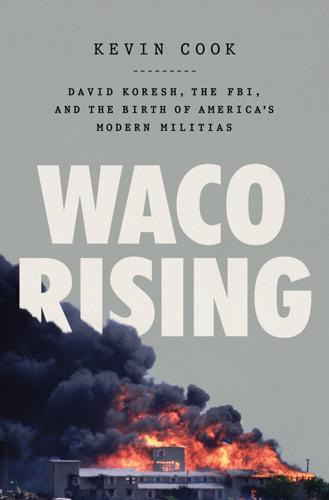
Waco Rising: David Koresh, the FBI, and the Birth of America's Modern Militias
by
Kevin Cook
Published 30 Jan 2023
George countersued, urging Judge Logue to reject all claims from Lois, who he said was “under the spell of V. W. Howell … She is not capable of managing the property, or even preserving her own life from these cut-throats, motorcycle gangs, rock and roll musicians, and Satan worshippers.” If Vernon wasn’t stopped, George wrote, there could be “a Jim Jones–type massacre” at Mount Carmel. This was the first reference tying Branch Davidians to Jones’s Peoples Temple, a sect that had established a commune in Guyana a decade before. In 1978, with federal agents looking into sexual and other abuses at Jonestown, the Reverend Jones led a last rite in which his followers drank grape Flavor Aid spiked with cyanide.
…
George Roden’s claims to be the Davidians’ prophet and his charges against “pervert and rapist” Vernon Howell can be found in the Texas Collection at Baylor. Koresh recalled his first impressions of Rachel Jones and his “vision” in Israel during phone calls with FBI negotiators. The last days of Jim Jones and his Peoples Temple in Guyana were widely reported, including in Jeff Guinn’s The Road to Jonestown. Bonnie Haldeman described the Davidians’ time in Palestine, Texas, in her Memories of the Branch Davidians. Sheila Martin did the same in her talks with me. I found the flyer Vernon Howell handed out to Seventh-day Adventists at the Superdome in 1985 in the Texas Collection at Baylor.
…
Van Zandt told the negotiators that their commanders thought the crisis was “developing as in Guyana with Jim Jones.” Park Dietz, the UCLA professor and FBI advisor who had diagnosed Koresh as a psychopath without meeting him, informed the Bureau that Koresh was “suicidal and may have made a suicide pact with other members.” According to FBI records, “Cyanide poisoning was thought to be a major risk, and therefore cyanide antidote kits were made available on the scene. The Attorney General asked about the possibility of a mass suicide.” There was no cyanide at Mount Carmel. Koresh told the negotiators again and again that he was “no Jim Jones.” He wasn’t going to go all Rambo on them, either, he said.

Waco: David Koresh, the Branch Davidians, and A Legacy of Rage
by
Jeff Guinn
Published 24 Jan 2023
Corral—and How It Changed the American West; Manson: The Life and Times of Charles Manson; and The Road to Jonestown: Jim Jones and Peoples Temple, among other books. He lives in Fort Worth, Texas, and is a member of the Texas Literary Hall of Fame. SimonandSchuster.com www.SimonandSchuster.com/Authors/Jeff-Guinn @simonbooks ALSO BY JEFF GUINN War on the Border: Villa, Pershing, the Texas Rangers, and an American Invasion The Vagabonds: The Story of Henry Ford and Thomas Edison’s Ten-Year Road Trip The Road to Jonestown: Jim Jones and Peoples Temple Manson: The Life and Times of Charles Manson The Last Gunfight: The Real Story of the Shootout at the O.K.
…
Though George never specifically advocated it, violence seemed imminent. Utilizing the bully’s classic tactic of presenting himself as the victim, George sent a telegram to McClennan County district attorney Feazell. It referenced the notorious religious leader of Peoples Temple, who only a few years earlier had led more than nine hundred followers to their deaths in the jungles of Guyana: Have Jim Jones type character in Waco Texas making death threats to me and family and proclaiming mass murder at New Mount Carmel Center Waco Texas Route 7 Box 471B 76705 at Branch Davidian 7th Day Adventist Association headquarters. Need investigation now.
…
Accompanying materials, supplied to the senator’s office by the constituent, alleged that Vernon Howell, aka David Koresh, “may have been planning a mass suicide for the members of his religious sect.” This was a touchy allegation for the FBI, which had come under widespread criticism in 1978 for ignoring warnings about the Peoples Temple outpost in the jungles of Guyana. More than nine hundred members of that group either committed suicide by ingesting poison or were forcibly injected at the order of their leader, Jim Jones. A congressman who had come to the community known as Jonestown to investigate was murdered at a nearby airstrip, along with members of the media and some Jones followers who had chosen to leave the settlement.

Heaven Is a Place on Earth: Searching for an American Utopia
by
Adrian Shirk
Published 15 Mar 2022
I have never heard of a racially integrated communitarian movement of this scale, though unfortunately a smaller and more famous one is the Peoples Temple, Jim Jones’s community in Guyana, which was multiracial as a central part of its project and theology. Jim Jones and Father Divine had actually met and been in contact during the years Jones’s church was still in Indianapolis and not yet a death commune. In the late sixties, after Divine had passed away and as the Peoples Temple was growing, Jones publicly claimed to be Father Divine reincarnate and after that the Family Divine distanced themselves from him.
…
I asked Addison, during the Q & A, if he knew of any “purposefully multiracial” communes from this era, and he said that the Diggers remained directly connected to the Oakland-based Black Panthers and other Black revolutionary movements located in cities, even as they began to build communities in Mountain West deserts. But that was not what I was asking. In fact, as I asked the question, I thought of Jim Jones’s Peoples Temple, perhaps the largest purposefully multiracial commune from that decade, and I felt queasy. Because the more my own search for commune building continues, the anxiety persists, for me, about how communes reproduce or often worsen the same kinds of stratifications and exclusions that exist on “the outside”—and that if communal life isn’t in some way responding to that problem, or trying to, then it’s not worth much.
…
He never makes the leap, but he does eventually marshal his skill as a computer engineer to develop the Father Divine Library, a public archive, at Woodmont. I guess what I found riveting was how the story never ends, even after Divine has left this plane and there are only twelve old people left and someone as horrifying as Jim Jones tried to usurp the legacy. I asked Rydant if he knew that story about Jim Jones claiming to be the reincarnation of Father Divine. “Sure, I know that story,” he said, smiling. “I’m the reincarnation of Sarah Orne Jewett.” utopianotes “Heaven Is a Place on Earth,” music video dir. by Diane Keaton It begins with a dozen illuminated globes—those novelty lamps from the 1980s—splashing into a dark pool of water.
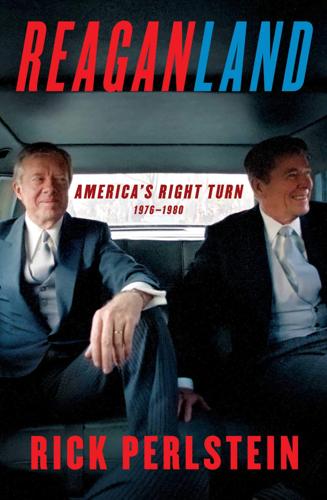
Reaganland: America's Right Turn 1976-1980
by
Rick Perlstein
Published 17 Aug 2020
THE DAY after the election, fifteen days before Thanksgiving, and ten days before the State Department relayed to the world, on November 18, that a congressman from California named Leo Ryan had been shot dead in the South American nation of Guyana. Ryan had gone to investigate a bizarre San Francisco minister named Jim Jones, who had recruited thousands of fanatically devoted followers—a mix of poor, uneducated African Americans and whites from the professional classes—to his “Peoples Temple,” whose doctrine joined Marxism with Pentecostal-style faith healing. Jones then impelled hundreds of them to follow him to a barren “agricultural mission,” in the jungle, that he had christened Jonestown. A little-noticed story had gone out over the UPI wire months earlier about a twenty-five-year-old former resident named Deborah Layton.
…
Allegations began emerging that liberal public officials in San Francisco, including Mayor George Moscone, had relied on the volunteer labor of this cult in order to win election, and that one of Jones’s acolytes, Tim Stoen, had even managed to get named deputy district attorney, in charge of investigating election irregularities for which the Peoples Temple was in fact responsible. Ronald Reagan was asked about Jonestown in Bonn, Germany, where he was embarked on a weeklong European tour. He said Jim Jones “supported a number of political figures but seemed more to be involved in the Democratic Party. I haven’t seen anyone in the Republican Party having been helped by him or seeking his help.” Tasteless, ill-timed—and also not true: Jones had also proven adept at seducing the Republican power structure up in Ukiah.
…
California’s state motto, presidential press secretary Jody Powell mocked callously, should be “Give me mine and to hell with the rest of the country.” Senator Percy of Illinois chimed in that California had been “creating their own problems,” and welcomed the fact that its citizens were finally suffering the consequences for “depending continually on automobiles.” California: home of the late Jim Jones’s Peoples Temple, the “I don’t like Mondays” teenage homicidal maniac the Hillside Stranger—and the former San Francisco city supervisor, cop, and fireman who had climbed through a back window at City Hall with his police revolver and shot the mayor and a fellow city supervisor dead. Which provided the next California spectacle for the nation to gawk at: the trial of Dan White
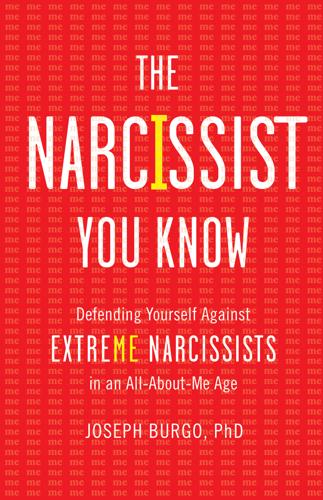
The Narcissist You Know
by
Joseph Burgo
For his particular group of adherents, he seems to possess “specially exceptional powers or qualities” that give him an uncanny ability to persuade. So powerful was his influence over his “family” that Charles Manson convinced them to murder a number of innocent people in brutally cruel ways. In 1978, Jim Jones persuaded over 900 members of his Peoples Temple Agricultural Project, better known as Jonestown, to commit suicide (although evidence exists that some were coerced). David Koresh, the charismatic leader of the Branch Davidian cult in Waco, Texas, led his people on a 51-day stand-off against the FBI and the ATF that eventually led to the death of more than 75 men, women, and children.
…
In order to escape from feelings of core shame—of being small, needy, and defective—the cult leader takes flight from himself and seeks refuge in a grandiose self-image meant to “disprove” all the damage. I’m not defective. I’m a supremely important person. It comes as no surprise that Charles Manson, David Koresh, and Jim Jones all emerged from horrific backgrounds. Manson was born to a fifteen-year-old girl who went to jail for five years when he was only four. Koresh’s mother likewise gave birth out of wedlock when she was only fifteen; he never knew his father and was reared largely by his grandparents. Though Jim Jones spent most of his childhood with both parents, his alcoholic father had been disabled by injuries sustained during World War I and the family lived in a shack without plumbing; his mother believed she had given birth to the Messiah.

A Devil's Chaplain: Selected Writings
by
Richard Dawkins
Published 1 Jan 2004
Of course suicide, like murder, is a mixed blessing: would-be converts may be repelled by, or may treat with contempt, a faith that is insecure enough to need such tactics. More obviously, if too many individuals sacrifice themselves the supply of believers could run low. This was true of a notorious example of faith-inspired suicide, though in this case it was not ‘kamikaze’ death in battle. The Peoples’ Temple sect went extinct when its leader, the Reverend Jim Jones, led the bulk of his followers from the United States to the Promised Land of ‘Jonestown’ in the Guyanan jungle, where he persuaded more than 900 of them, children first, to drink cyanide. The macabre affair was fully investigated by a team from the San Francisco Chronicle.
…
His victims were not only female. One 17-year-old male follower, from the days when Jones’s community was still in San Francisco, told how he was taken for dirty weekends to a hotel where Jones received a ‘minister’s discount for Rev. Jim Jones and son’. The same boy said: I was really in awe of him. He was more than a father. I would have killed my parents for him. What is remarkable about the Reverend Jim Jones is not his own self-serving behaviour but the almost superhuman gullibility of his followers. Given such prodigious credulity, can anyone doubt that human minds are ripe for malignant infection? Admittedly, the Reverend Jones conned only a few thousand people.
…
If the patient is one of the rare exceptions who follows a different religion from his parents, the explanation may still be epidemiological. To be sure, it is possible that he dispassionately surveyed the world’s faiths and chose the most convincing one. But it is statistically more probable that he has been exposed to a particularly potent infective agent – a John Wesley, a Jim Jones or a St Paul. Here we are talking about horizontal transmission, as in measles. Before, the epidemiology was that of vertical transmission as in Huntington’s Disease. 7. The internal sensations of the patient may be startlingly reminiscent of those more ordinarily associated with sexual love. This is an extremely potent force in the brain, and it is not surprising that some viruses have evolved to exploit it.
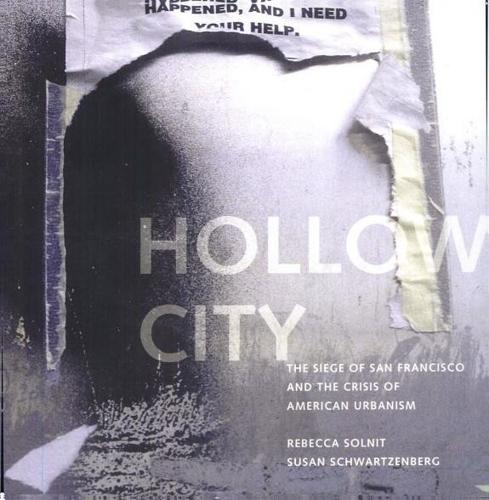
Hollow City
by
Rebecca Solnit
and
Susan Schwartzenberg
Published 1 Jan 2001
This time the displacement was real estate carried out tycoon Walter Shorenstein sold the building to a his by private enterprise Hong Kong plan to turn corporation when into a parking garage it was squelched, and the Hong Kong corporation proceeded with the evictions. Among those organizing the resistance was Emile de Guzman, who had grown up around Cesar Chavez's United Farmworkers, and support of various kinds came from the Weathermen and Jim Jones's Peoples Temple (whose home base in the Western Addition provided an however problematic, outlet, for those traumatized by urban renewal before many of them died in Lewis Watts holds a photograph he salvaged and installed Barbershop in #3. Reggie Pettus's New Guyana). A crowd of five thousand met the four hundred policemen and sheriff's deputies Chicago who finally evicted the last remaining residents in 1977.

Going Clear: Scientology, Hollywood, and the Prison of Belief
by
Lawrence Wright
Published 17 Jan 2013
There is a strangely contorted mound in a cemetery in Oakland, California, close by the naval hospital where Hubbard spent his last months in uniform. Under an undistinguished headstone rest four hundred bodies out of the more than nine hundred followers of Jim Jones who perished in Jonestown in 1978. The caskets had been stacked on top of each other on the side of a bulldozed hillside, then the earth was filled in, grass was planted, and the tragedy of Jonestown was buried in the national memory as one more inexplicable religious calamity. The members of the Peoples Temple, as Jones called his movement, had been drawn to his Pentecostal healing services, his social activism, and his racial egalitarianism. Charisma and madness were inextricably woven into the fabric of his personality, along with an insatiable sexual appetite that accompanied Jones’s terror of abandonment.
…
A year after these macabre incidents, the burned corpses of sixteen other members of the group were found in Grenoble, France; then, in 1997, five more members of the order burned themselves to death in Quebec, making a total of seventy-four deaths. In contrast to the Branch Davidians or the followers of Jim Jones, who were predominantly lower class, the members of the Solar Temple were affluent, well-educated members of the communities they lived in, with families and regular jobs, and yet they had given themselves over to a mystical science-fiction fantasy that turned them into killers, suicides, or helpless victims.
…
Charisma and madness were inextricably woven into the fabric of his personality, along with an insatiable sexual appetite that accompanied Jones’s terror of abandonment. In his search for a secure religious community, Jones had repeatedly uprooted his congregation. Finally, in May 1977, the entire movement disappeared, virtually overnight. Without warning, leaving jobs and homes and family members who were not a part of the Peoples Temple, they were spirited away to a jungle encampment in Guyana, South America, which Jones billed as a socialist paradise. There he began to school them in suicide. I learned that not everyone had died in Jonestown. Among the survivors were Jones’s three sons: Stephan, Tim, and Jim Junior. They had been away from the camp playing basketball against the Guyanese national team in the capital city of Georgetown.
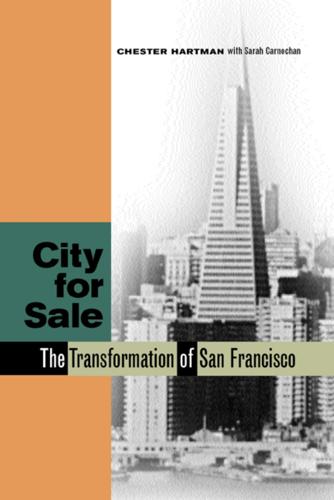
City for Sale: The Transformation of San Francisco
by
Chester W. Hartman
and
Sarah Carnochan
Published 15 Feb 2002
The city hall shootings had occurred less than two weeks after the Jonestown, Guyana, mass suicides and murders, in which 913 members of the People’s Temple took their own lives and five people were murdered (San Mateo Congressman Leo Ryan, three media personnel, and a fleeing cult member).29* Before moving en masse from San Francisco to Guyana, the sect had in a few years become a potent force among the city’s black and politically progressive populations, and its charismatic leader, the Reverend Jim Jones, had been a political figure of no little weight, capable of delivering his thousands of members virtually as a voting bloc.† Moscone had appointed Jones first to the City’s Human Rights Commission, then as Housing Authority chair. In the chaotic and frightening aftermath of these events, Dianne Feinstein, with her Pacific Heights, Junior League bearing and sensibilities, and “her inoffensive brand of moderate politics,”30 provided a welcome, calming, normalizing force.‡ When the time came for her former colleagues to choose a mayor to fill out the remaining year of Moscone’s term, she was the ordained choice.
…
We decided we would just pass the hat and not ask the city to reimburse us.”)40 The Feinstein campaign aimed at convincing voters that “the recall is a low blow, a sleazy move respectable citizens would do best not to be associated with.”41 The explicit and subliminal theme of her literature, billboards, and statements was that approval of the recall would be a victory for anarchy and chaos, that the forces of darkness (echoes of Jim Jones and Dan White) would prevail, that the city would be leaderless. Feinstein chose as her recall election campaign manager Clint Reilly, who had managed Quentin Kopp’s 1979 mayoral race against her and was media advisor in the 1977 district elections victory (“Reilly said that he is a passionate partisan for his clients but he also is a flexible professional.”)42 As described in the Bay Guardian, “Reilly is subtly, deftly and cynically playing on a profound sense of unease that has its roots in this city’s recent political history.”43 Feinstein labeled the recall, in doubtless carefully chosen words, “a guerilla attack on our system.”44 Feinstein’s official statement on the recall, as printed in the Voter Information Pamphlet, focused on the Panthers as “radicals who have a history of confrontation with police and other authorities.
…
Attempts by realty tycoon Walter Shorenstein in the late 1960s to turn the hotel into a parking facility were vigorously opposed by the neighborhood, and Shorenstein thereupon sold the hotel to the Hong Kong–based Four Seas Development Corporation, which over the next few years aggressively sought to evict the tenants. Neighborhood, ethnic, and church groups (including massive contingents from Reverend Jim Jones’s People’s Temple) rallied to prevent the evictions, with demonstrations as large as five thousand people. The political pressure was so intense that Sheriff Richard Hongisto, elected in 1975 by a liberal-gay coalition, at first refused to carry out a court-ordered eviction, for which he served five days in jail.
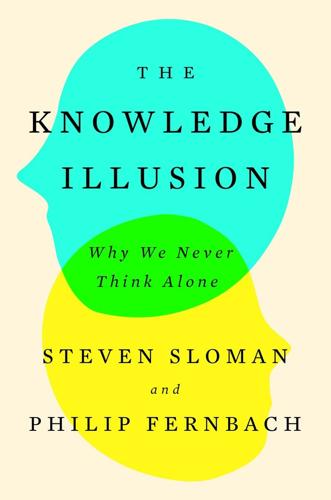
The Knowledge Illusion
by
Steven Sloman
Published 10 Feb 2017
But despite living within a community, we must retain the responsibility for our decisions. Others can be wrong, and sometimes communities come to extremist and misguided views. People can deceive themselves and groups can jointly deceive one another. If they couldn’t, we wouldn’t see the bizarre tragedies that occur when cults with charismatic leaders go off the deep end, as Jim Jones’s Peoples Temple did in Jonestown, Guyana, in 1978. After attacking the entourage of Congressman Leo Ryan and killing the congressman, the group participated in a mass murder-suicide that left 909 men, women, and children dead, mostly of cyanide poisoning. Fortunately, this kind of event is extraordinarily rare, but it is not isolated.

Coastal California Travel Guide
by
Lonely Planet
There are also almost four million Muslims and over seven million Hindus statewide, LA has one of the 10 biggest Jewish communities in the country, and California has the largest number of Buddhists anywhere outside of Asia. Despite their proportionately small numbers, California’s alternative religions and utopian communities dominate the popular imagination, from modern pagans to new-age healers. California made national headlines in the 1960s with gurus from India, in the 1970s with Jim Jones’ Peoples Temple and Erhard Seminars Training (EST), and in the 1990s with Heaven’s Gate UFO-millennialist cult in San Diego. The controversial Church of Scientology is still seeking acceptance with celebrity proponents from movie-star Tom Cruise to musician Beck. California is also a stronghold of fundamentalist and evangelical Christian churches, which have proliferated for the last century, notably in SoCal.
…
The Magic Theatre gained a national reputation in the 1970s, when Sam Shepard was the theater’s resident playwright, and it still premieres innovative California playwrights today. An audience-interactive troupe, We Players, stages classic plays, including Shakespearean dramas, at unusual locations such as Alcatraz. Across the Bay the Berkeley Repertory Theatre has launched acclaimed productions based on such unlikely subjects as the rise and fall of Jim Jones’ Peoples Temple. By the Book Californians make up the largest market for books in the US, and read much more than the national average. Skewing the curve is bookish San Francisco, with more writers, playwrights and book purchases per capita than any other US city. The West Coast is a magnet for novelists, poets and storytellers, and California’s multicultural literary community today is stronger than ever.

Norco '80: The True Story of the Most Spectacular Bank Robbery in American History
by
Peter Houlahan
Published 10 Jun 2019
Cities descended further into lawlessness, poverty, and bankruptcy while violent crime across the country escalated at a rate that would be almost unimaginable today. Communes turned into cults or business opportunities for predatory self-help gurus. In November 1978, just eighteen months before the Norco robbery, more than nine hundred members of the Peoples Temple died in what cult leader Jim Jones labeled an act of “revolutionary suicide” but was, in fact, mass murder. The more traditional idea of armed revolution was also particularly active in the 1970s. It was not long before the 1960s idea that you could change society morphed into the belief that you must destroy it first.

Northern California Travel Guide
by
Lonely Planet
The Magic Theatre gained a national reputation in the 1970s, when Sam Shepard was the theater’s resident playwright, and still today it premieres innovative California playwrights. Across the Bay, the Berkeley Repertory Theatre has launched acclaimed productions based on such unlikely subjects as the rise and fall of Jim Jones' People's Temple. Film in San Francisco Although San Francisco can’t hold a candle to the cinematic clout of its neighbor to the south, the city hosts a number of internationally renowned film festivals. The annual San Francisco International Film Festival, held each spring, is the oldest continuously running film festival in the Americas and the city also hosts several other notable film festivals each year, including the Asian American Film Festival in March and the International LGBTQ Film Festival in June as part of the city’s Pride Month.